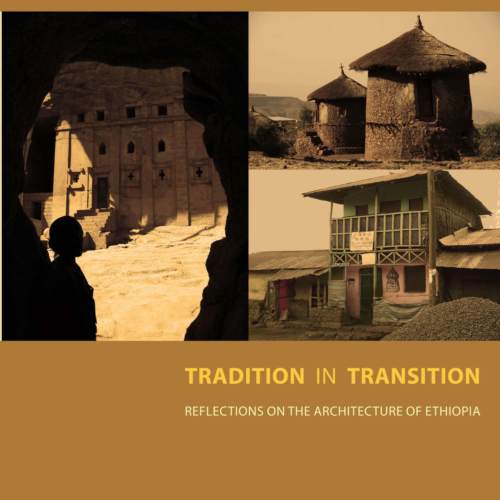Tradition in Transition. Reflections on the Architecture of Ethiopia
Project coordination: Ao. Univ. Prof. DI Dr. Andrea Rieger-Jandl
Project team: Guest professor Peter Rich, M.arch, Johannesburgh/South-Africa, Dr. Petra Gruber. Authors: A. Deix, I. Mayer, A. Haile, R. Bornberg, M. Schweigkofler, K. Elbel, R. Liendl, J. Leithner, V. Browning, B. Weber, C. Einhell, D. Kassaw, E. Chocian, M. Weissenböck, J. Soulos, F. Zamolyi
Project partners: APDA Afar Pastoral Development Association, EiABC Ethiopian Institute of Architecture, Building Construction and City Development/AAU Addis Ababa University
Type of project: Excursion, research, documentation
Duration: 2011-2013
Publication: Rieger-Jandl, Andrea (ed.), 2016: Tradition in Transition. Reflections on the Architecture of Ethiopia, IVA publishers, Vienna
Ethiopia is a country with a unique architectural heritage. Based on a student excursion to Ethiopia in February 2011, students and teachers from Ethiopia and Austria wrote articles and seminar works expressing their different views on Ethiopian architecture. The outcome was collected in a book. In the subsequent book, many people express their opinions and their views on Ethiopian architecture within a variety of topics according to the Ethiopian saying: A single stick may smoke, but it will not burn.
Ethiopian architecture evolved out of the history of a powerful and religious ancient civilization with a rich cultural background based on tradition and legend, mystery and fact. According to the legend, Emperor Menelik, son of King Solomon and the Queen of Sheba, brought the Ark of the Covenant from Jerusalem to Aksum, and from there he established one of the world’s longest known, uninterrupted monarchical dynasties. Until today Ethiopia´s palaces and religious buildings bear witness to the achievements of one of the world´s oldest Christian civilizations. Some historical and archaeological places, such as Aksum, Lalibela, Gondar, or Debre Damo, have already been well researched and documented, whereas others, like the religious architecture of the Gheralta valley and many rock-hewn churches throughout Tigray have hardly gained any scientific attention.
As in many discussions about architectural history, the analysis of vernacular architecture in Ethiopia is conspicuously absent. However, in a country with 79,2 Mio inhabitants and more than 80 different ethnic groups the variety and vividness of indigenous architectural expression is fascinating (www.aethiopien-botschaft.de/… 2012). Although the spreading of modern technology has caused considerable changes regarding village- and urban settlement structures, the majority of Ethiopians still are largely unaffected by this and lead a rural life determined by traditional economic patterns and ideologies.
They have a strong, independent, living culture with vernacular buildings that immediately reflect the environmental and climatic circumstances, which are well integrated into religious or spiritual convictions, and strongly tied to the ancestors and the social community, ritual and symbolism. Because of the marked presence of the traditional built environment in everyday life many features of identification, habitual practices and guidelines of orientation have been preserved in a physical form.
But since Ethiopia has one of the fastest-growing populations in the world, the provision of adequate housing will be a major challenge for future generations. Already today the collective creativity that makes Ethiopian architecture so distinct, is on the verge of change, and traditional built structures disappear with every new road that is built. While formerly the question was: “What does the architecture of Ethiopia look like?” it now has to be: “How is the architecture of Ethiopia changing due to rapid globalization processes?”
The speed of change seems to leave no time for `adaptation´, but can only be referred to as `transformation´. Thus the Ethiopian built heritage is a “Tradition in Transition”, as the title of this book indicates. According to Websters dictionary (www.merriam-webster.com, 2012), `transition´ is defined as: a movement, development, or evolution from one form, stage, or style to another. Within this process of transformation the preservation of the outstanding examples of built heritage is important. However, in order to fulfill the human right of adequate housing for all, it will be a matter of accepting change and new lifestyles on the one hand, but on the other hand of not losing track regarding the past, ones roots and a lived identity. The question is how to find the best solutions regarding the ever-present clash of tradition and innovation. Who are the people sitting in the transit room between their traditions and roots and their expectations in a progressive future life? How can new needs and requirements regarding a progressive living standard be met? And how can architecture as a physical expression of culture, social formations and identity come to terms with the ideology of these people?
There will never be a customs control on the transfer of ideas and ideals. But indeed it can be a great chance if external procurement is seen as an inspiration and not as an invitation for an unreflected adoption of ideas.
.


